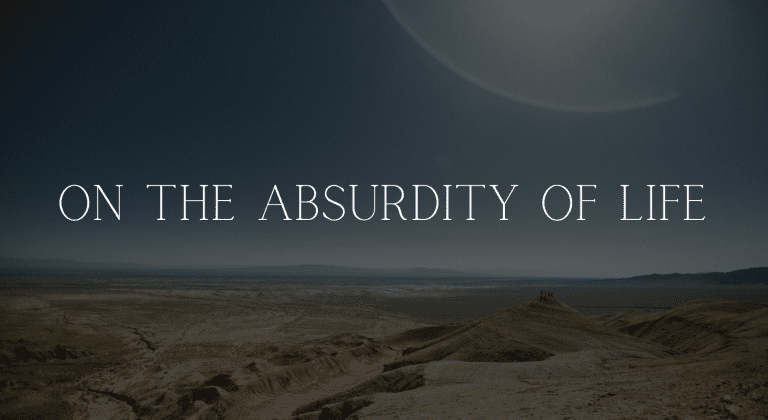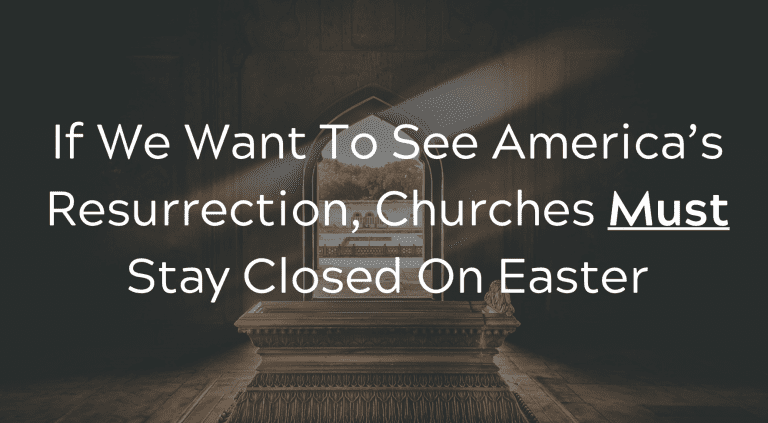This sermon was originally preached at Missiongathering Christian Church in San Diego, CA.
Following the intertestamental period, in the first century, the Jewish world was becoming gradually Hellenized, which means it was adapting to and adopting Greek and Roman culture and worldview because the Greeks and Romans ruled over the province of Israel.
During this period, a large number of Jewish Rabbis were rising up claiming to be “Messiahs” which was a word that simply means “anointed one”, and is a term used for Kings and rulers of Israel throughout the Hebrew Bible.
The reason for so many “Messiahs” rising up were because the Jewish people found themselves once again under the oppressive hand of another empire, the Roman Empire, and they longed for a day when God would bring them a leader who would lead a revolt against Rome and free the Jewish people to rule themselves in their own land.
For a majority of Jewish people, a Messiah was not primarily a spiritual or supernatural leader, but was expected to be a political and military leader who would bring literal liberation and rule a literal “Kingdom of God”, also known as the Kingdom of Israel.
But because the Jewish people believed that this ruler would be appointed by God, there was also always a sense that he would be a spiritual leader or supernaturally inclined. He would come to lead the Jewish people into a lifestyle of righteousness, and thereby, lead them into the blessing and providence of God.
In first century Palestine, literally dozens upon dozens of Rabbis and lay people alike were rising up, claiming the title of “The long-awaited Messiah”, and they would gather followers and attempt to lead a revolt- sometimes violently- against the Roman Empire.
And every time, Rome would fight back, opting to usually publicly humiliate and crucify the “would be messiah” to make an example, basically saying “Is this the best you’ve got?”, hoping to crush the hopes of the Jewish people of ever being free.
This is the context in which the first books of the New Testament take place in and this is the context that this radical Rabbi from Nazareth named Jesus emerged.
But before I continue on with this story and context, let me give us a brief overview of the entire New Testament.
The New Testament is a compilation of 27 books broken into six sections. Those sections are:
- The Gospels
- The Book of Acts
- The Epistles of Paul
- The General Epistles
- The Epistles of John
- The Revelation of John or the Apocalypse
The earliest written text of the New Testament is actually the Letter of James, the brother of Jesus, which is dated around 40-45 A.D. just 10-15 years after Jesus ministry on earth. So, if you want to know what the earliest Christians believed and taught, James is the place to begin.
The next earliest writings were the writings of The Apostle Paul, who began writing his letters to the early church communities around 50 A.D., about twenty years after Jesus ministry on earth.
During this time, it is believed by a majority of Biblical scholars that another book called “Q” was circulating among the churches which contained a collection of the teachings of Jesus. Following Q, Mark emerged between 50-60 A.D, and these sources were compiled into the expanded narratives of Luke and John.
The first five books of the New Testament, the Gospels and Acts were created for various groups of Christians around the ancient world to help them know and pass on the story and teachings of Jesus. From what we can tell, the earliest Christians, who were all Jewish and met in synagogues and the temple among other Jewish believers, began to use the Gospel’s as the new “Torah”, the new story of a new era that God was bringing about beginning with Jesus.
Instead of reading the writings of Moses, they replaced those with the writings about Jesus who is called “The better Moses”. They related to the Jewish scriptures in the same way that Jesus did- as a point of reference, but not as the final word. They believed Jesus had come to bring a better set of laws that better reflected the heart of God, and Jesus taught that:
“All of the Laws and writing of the Prophets in the Hebrew Bible should be summed up in this greater commandment: Love God and Love your neighbor as yourself.”
As you can probably tell, this sort of language made the early Christians quite unpopular among the traditional Jewish believers meeting in the synagogues alongside them- how dare they say that this crucified Rabbi was better than Moses and Abraham and Elijah and Adam (all claims that the New Testament makes).
How dare they claim that these new writings and this new story was better than the Scriptures that they had read and studied for two thousand years?
How dare they believe that God had created a newand better covenant, one that was not reliant on the laws of the Hebrew Bible but on “grace”?
We see these struggles throughout the entirety of the New Testament- arguments even among the Apostles who were the leaders of the early church, trying to figure out how they should relate to the Old Testament and the Jewish tradition now that they had committed to following Jesus who radically reinterpreted them.
The reason we see so much tension between the traditional Jewish establishment and the early Christians was because these early Christians were claiming that they were the true and authentic Jews, even though they showed little respect or reverence for the laws, teachings, and traditions of the Jewish establishment.
And when the church eventually decides to let Gentiles (non-Jews) in to their communities of faith, they forever distinguish themselves as outsiders to the traditional Jewish community. As the writer of Acts says, when this happens, for the first time the call themselves “Christians”.
“The disciples were called Christians first at Antioch.” – Acts 11:46
It’s out of this radical community of reformers that the New Testament emerges. However, it wasn’t until around 140 A.D. at the earliest (one hundred years after the earliest writing) that the New Testament came together as a singular book circulated among Christian churches. And it wasn’t until 300 A.D. (two hundred and fifty years later) that the New Testament canon as we have it, with all 27 books, was the official scripture of Christians.
Like all Scripture, as we have seen, there are disputes about what belongs and what doesn’t. What was authentically written by Paul or Peter or John, and what wasn’t. Even today, 2,000 years later, we are pretty confident that every Scripture named a “Letter of Paul” wasn’t actually written by Paul, and some of the sayings or actions of Jesus contained in the Gospels were later additions, not part of the original “Q” document that was likely the most accurate account of Jesus life and teachings.
But that’s not the point of the New Testament writings. The point isn’t to provide facts and figures about the early church, but rather, to give us an understanding of the general content of Jesus teachings, the narrative of his story, and his impact on the world in the decades and centuries after his death and resurrection.
What we have in the New Testament is a reliable collection of books that show us the struggles of the early church to decide who they were, what it looked like to follow Jesus, and what they believed was the best way to live in the world.
The Gospel accounts provide for us accurate assessments of Jesus’ teaching and example- especially Mark and Matthew- and also include some myths and stories which may or may not be factually true, but tell us about how the early church developed in their thinking about who Jesus was and how important he was to them.
In Paul, we learn that churches are full of drama, and that people can sometimes be crazy. Paul spends pages telling people not to sleep with their mothers, not to judge peoples clothing, not to argue about what food to eat, and not to eat all of the communion bread. The same conversations that I sometimes have to have in our church thousands of years later, and I am grateful for Paul’s example.
We also see the wrestling and struggle over what it looks like to be a religion and community of inclusion. If anything was clear in the teachings of Jesus, it was that all people, especially the marginalized and oppressed were invited to his table and to follow him, which distinguished the religion of Jesus from most other religions in the first century that were divided by race, class, and culture.
The “New Covenant” that Jesus preached and the early church struggled to adopt was a covenant of radical grace that called all people- Jews and Gentiles alike- to get over their differences, set aside their prejudices, and work together to create a more just and generous world for everyone.
This new covenant called the followers of Jesus to move beyond the rigid requirements of the laws of the Hebrew Bible, and to embrace only one law, the law of love, and they were assured that if they followed that law, they would be right with God and right with their neighbor.
When one studies the texts of the New Testament closely, we find it to be a truly revolutionary work, and it makes sense that it has single-handedly transformed the world. In it, we find a manifesto for a revolution that comes not through violence or war or political power, which is what the Jewish people expected in their Messiah, but through self-sacrifice, forgiveness, and grace, which we’re told was actually the message buried beneath the surface of the Hebrew Bible the whole time.
The writers of the New Testament say that all of history and all of the Hebrew Bible pointed to Jesus and his new and better way- a way that at once is easier, in that it removed all the ridiculous requirements of the 612 Laws of Leviticus in order to be “clean” and “right with God”, but on the other hand is the hardest path to follow because it calls all of us to sacrifice our self-interest for the good of our friend, our neighbor, and even our enemy.
If we take the New Testament seriously, just like the Hebrew Bible, then we also recognize that it calls us beyond its rigid words on a page, into the flow of its spirit, wrestling with it and applying it every context in every age.
Because while the New Testament text itself is revolutionary, it’s certainly not perfect. In it, we find the Apostles still condoning slavery, sexism, and even occasional racism. The writers of the New Testament were bound by their culture and could only take Jesus words as far as they could understand and perceive in their context.
In our day, we’re called to take Jesus words and the example of the early church and ask, “How does this apply in our day, in our context?”
And when we do, we might find ourselves disagreeing with the conclusions of the Apostle Paul or Peter or John.
But that’s okay. That’s what’s supposed to happen. Because Paul and Peter and John were humans, just like us, doing their very best to teach and lead people in the way of Jesus in their context.
And each of us are called to do the very best we can to do the same in ours.
Sometimes, we may get it wrong. Sometimes we may mess it up. But that’s why Jesus preached a message of never-ending, unconditional grace for us all and called us to a life of continual repentance, which literally means “expanding our mind”- growing in our understanding and application of his life and teaching.
In this sense, the New Testament is truly living and active.
As one of my friends always says, the New Testament isn’t over. The book of Acts hasn’t concluded. We’re still living in the New Testament Church, writing the next chapters of its history, right here, right now, in San Diego in 2018.
A lot has changed in 2,000 years. But one thing has remained constant- a commitment to Jesus and his new covenant of love and grace.
And that’s how we’re called to engage with the New Testament text. We’re to read it, digest it, and allow it to become a part of how we think and act and live, with full knowledge that the story hasn’t ended. It’s ongoing, and each of us are a part of its next chapter.
For those of us who follow Jesus, the New Testament, and specifically the Gospels, should be our primary scripture. It should be our highest authority. It should be the lens through which we interpret all other scriptures, the Hebrew Bible, and the Apocrypha, as well as how we interpret the world we live in.
Jesus and his life, example, and teaching is what we are called to center on. And if we do, we will be lead on the “path that leads to abundant life.”
So, as we come to the end of this three-week series on the Bible, I want to wrap up with three primary lessons I hope we all take away:
First, that the Bible is a mysterious, unique, and inspired book that serves as a guide, a story, and a channel through which the Spirit of God can speak to us and direct our path. It’s a gift to us, to understand where we’ve been as humans, how we’ve sinned and justified our actions by saying “God said”, and it gives us ancient, tried and true wisdom that is intended to help us live better lives today.
Second, the Bible is a text that we are called to wrestle and argue with, never settling for “one interpretation” as the best or only interpretation, but engaging with it as a living text with meanings beyond the mere meanings on the surface. We’re called to mine the words to find the spirit behind them and ask, “how can this apply to me, today, in my context?”
And lastly, we’re called to engage the Bible through the lens of Jesus- who Christians have always believed was the fulfillment of all of the Scriptures, and who frees us to live not bound by laws, and regulations, and the fear of God’s judgement, but to live by the law of grace and love, which is in fact the higher, harder, and more life-giving standard.
All in all, the Bible is an amazing book, and is the foundational text of our faith. May each one of us move beyond the ways that the Bible has been misused and abused in our lives and world, and discover, once again, the power and beauty contained within these pages that has the power to transform our lives and the world for the better.
















